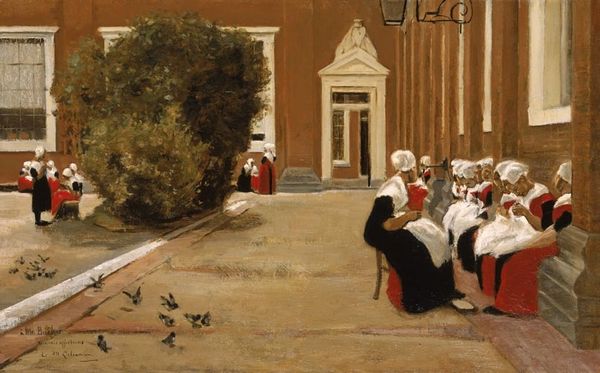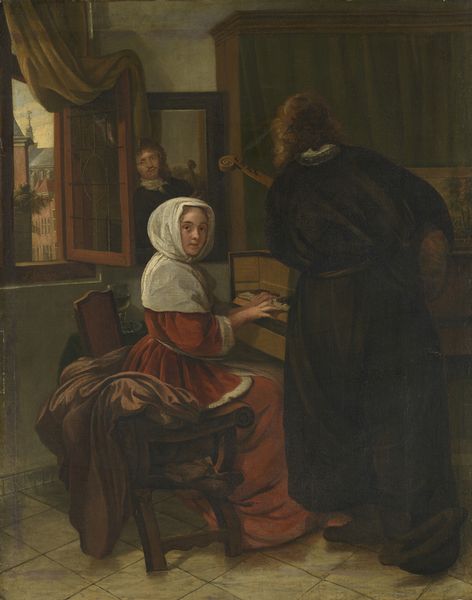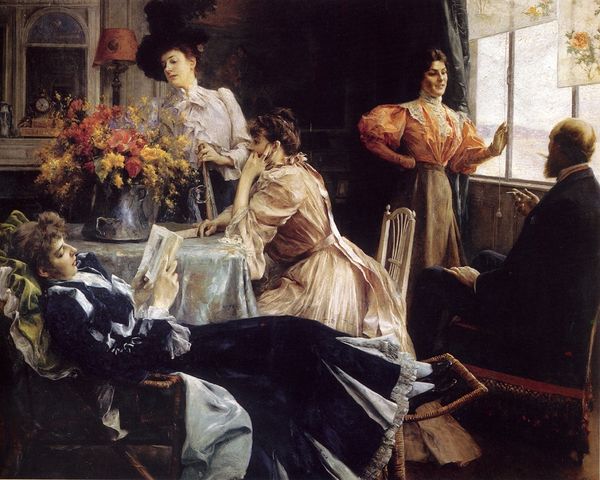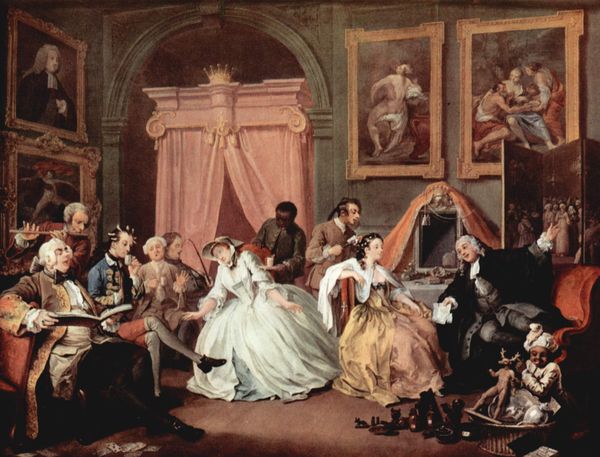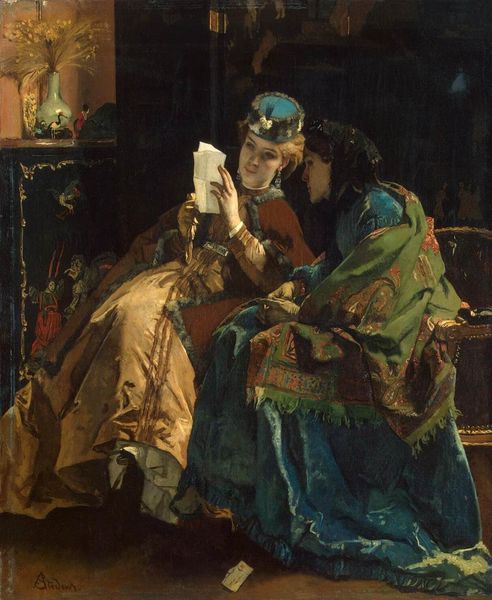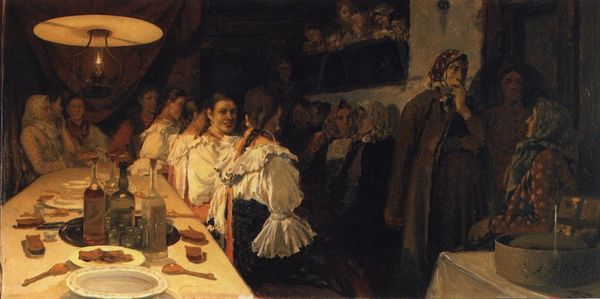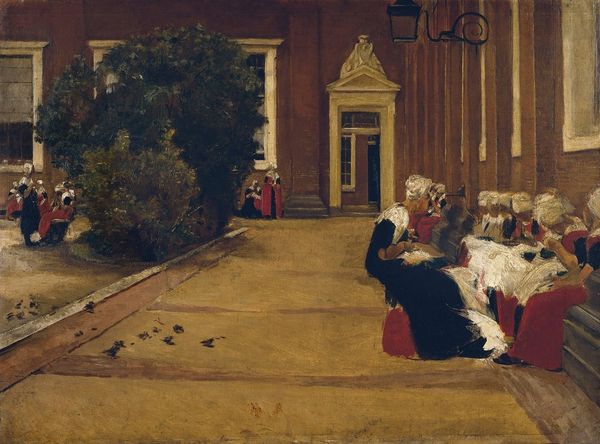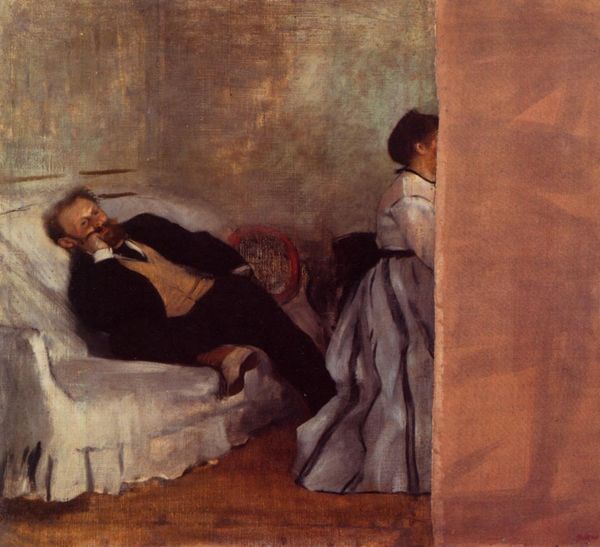
painting, oil-paint
#
portrait
#
painting
#
oil-paint
#
oil painting
#
cityscape
#
genre-painting
#
realism
Copyright: Public domain US
Curator: Standing before us is Edward Hopper's "New York Restaurant," completed in 1922. It's an oil on canvas depicting an interior scene. What are your initial thoughts? Editor: My immediate impression is one of intriguing stillness. The muted palette and dense composition convey a heavy, almost suffocating atmosphere, even with the presence of light. There's a curious disconnect between the figures and the objects around them. Curator: I agree about that sense of stillness, but to me it also conveys an underlying anxiety. If you analyze the scene with considerations about that period in the history of New York, post First World War, you see the bustling of economy and progress, which does not apply to everybody. Are they sharing in that experience? Who is excluded, who is allowed inside and who has to stay outside? The artist offers us a glimpse of the other half of that story, where promises do not arrive. Editor: From a formalist standpoint, it's fascinating how Hopper uses light and shadow to delineate space and define the characters within it. Notice how the planes of light slice through the room, almost segmenting the figures from one another. Are these people really dining together or existing separate spaces in this painting, maybe separate paintings brought together, in a composition? Curator: Exactly, those visual divides reflect societal fault lines. Hopper was deeply concerned with the isolation of modern life. The diners, seemingly lost in thought or separated by unseen barriers, could be understood to speak to his era: where one eats says a lot about who one is allowed to be, but Hopper presents it as almost involuntary on their part, dictated and imposed over them. Editor: What is also involuntary is how he arranges the scene with an assertive, almost didactic compositional strategy, as he controls the eye with diagonals, vertical lines that give an underlying structure and guide you. This composition creates this mood too, it is not the only possible outcome here. He imposes the experience of isolation. Curator: Ultimately, it is the tension between the specific and the universal that gives "New York Restaurant" its lasting power. It is both of its time and transcends it, prompting reflections on access, power and the ongoing relevance of economic struggles that go hand in hand with identity. Editor: I can’t agree more. And viewed purely as painting, the work achieves the status of icon—thanks to Hopper's adroit manipulation of form, color, and light. Curator: A painting indeed layered with narratives we can keep unpacking even after a century. Editor: Yes, "New York Restaurant" continues to invite contemplation.
Comments
No comments
Be the first to comment and join the conversation on the ultimate creative platform.
